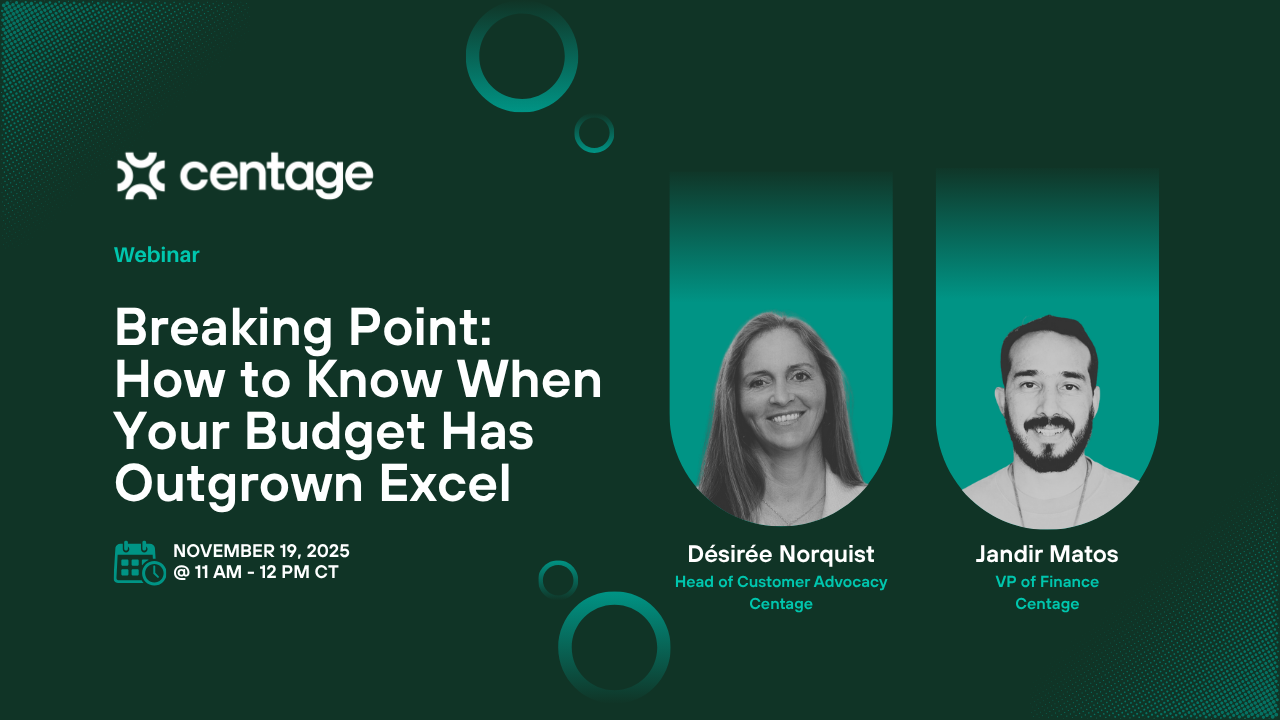Why Scenario Planning Is Critical for Resilient CFOs
Building Resilience With Scenario Planning for CFOs
Volatility is the new baseline. Whether you’re pricing next quarter’s wage increases or mapping a multi‑year capital plan, the assumptions you made yesterday can age out overnight. Scenario planning gives resilient CFOs the financial agility to pivot early, allocate capital deliberately, and keep leadership focused on data‑driven strategy instead of knee‑jerk reactions.
What Scenario Planning Really Means for Today’s CFO
Traditional budgeting and forecasting locks teams into a single “most likely” view. Scenario planning layers multiple economic scenarios onto that base case, stress‑testing every revenue driver, cost line, and cash position. The result is a living decision‑making framework that answers “what if?” before the board asks.
Why Scenario Planning Builds Financial Resilience
- Proactive risk management: Identify breaking points in margin, liquidity, or covenants before they’re breached.
- Faster, smarter decisions: Move from week‑long model rebuilds to real‑time performance modeling that supports rapid strategic planning.
- Greater stakeholder trust: Show investors that leadership is actively planning under uncertainty and future-proofing business operations.
Core Components of a High‑Impact Scenario Planning Model

Key disciplines to embed:
- Contingency planning thresholds (e.g., payroll as % of revenue)
- Monte Carlo or driver‑based financial modeling to quantify probability bands
- Rolling 12‑ to 18‑month forecast horizon to maintain business resilience
How CFOs Are Applying Scenario Planning in Real Life
- Healthcare businesses - A regional hospital models wage inflation, agency‑staff reliance, and payer‑mix shifts to safeguard margin.
- Higher Education - Finance teams run churn‑rate and discount‑rate scenarios to protect ARR and burn under multiple capital‑market moods.
- Non‑profits - Grants, donations, and program costs are scenario‑modeled to maintain mission delivery even when funding fluctuates.
Stress testing these situations revealed hidden liquidity gaps—and unlocked capital‑efficient growth paths that weren’t obvious in a single baseline forecast.
When (and How Often) to Revisit Your Scenarios
- Monthly: Refresh macro assumptions (rates, inflation, FX).
- Quarterly: Re‑align scenarios with updated strategic objectives and re‑forecast top‑risk drivers.
- Ad hoc: Trigger an update whenever a key assumption moves > 5 % or new regulatory guidance emerges.
A living model ensures budgeting and forecasting never drift away from reality.
Common Pitfalls to Avoid When Scenario Planning
- Pitfall 1: Building scenarios outside the source model in disconnected spreadsheets.
- Pitfall 2: Modeling extreme black‑swans only; you still need realistic “bumpy middle” paths.
- Pitfall 3: Forgetting to attach actions (hiring freeze, price uplift) to numeric thresholds.
- Pitfall 4: Treating scenario planning as a once‑a‑year exercise—resilience erodes quickly.
Scenario Planning Tech Stack: What CFOs Are Using
Core platforms
- Driver‑based FP&A software (e.g., Centage, originally Planning Maestro®)
- BI dashboards for real‑time KPI surfacing
- RPA or ETL pipelines for automated actuals loads
Metrics & tools checklist
- Cash runway under each scenario (months)
- EBITDA and covenant headroom vs. triggers
- Scenario‑weighted NPV for major projects
- Integrated contingency planning workflows (e.g., phased cost reductions)
- Cross‑scenario performance modeling to flag leading indicators
Turning Insights into Action
- Align finance and strategy. Share scenario outcomes with sales, ops, and HR so everyone understands trigger points.
- Pre‑approve playbooks. Draft policy actions (e.g., capex pauses) tied to scenario thresholds so execution is frictionless.
- Communicate clearly. Use visualization and plain language to keep executives focused on decisions, not model mechanics.
Ready to deepen your scenario capabilities?
👉 Get a personalized demo to see how Centage customers accelerate budgeting and forecasting cycles with driver‑based planning.
❓ FAQs about Scenario Planning
What is scenario planning in financial management?
It’s a structured approach to financial planning that models multiple economic scenarios—optimistic, base, and downside—to test profitability, cash, and balance‑sheet strength under different assumptions.
How do CFOs use scenario planning to manage risk?
They attach pre‑defined actions (raising prices, delaying hiring) to scenario thresholds, turning hypothetical models into real‑time risk‑management playbooks.
What tools are best for financial scenario planning?
Driver‑based cloud FP&A software tops the list, followed by BI dashboards and integrated data warehouses that support high‑frequency updates.
How often should you update a scenario plan?
Best practice is monthly for minor assumption tweaks and quarterly for full scenario rebuilds—or immediately when a key driver shifts materially.
Key Takeaways
- Scenario planning equips CFOs with the financial agility to navigate volatility and steer strategic conversations.
- Embedding decision‑making frameworks and stress testing in your regular cadence transforms uncertainty into informed opportunity.
The right tech and disciplined process help you not just survive disruptions but future‑proof growth.
Keep reading...
Interviews, tips, guides, industry best practices, and news.


